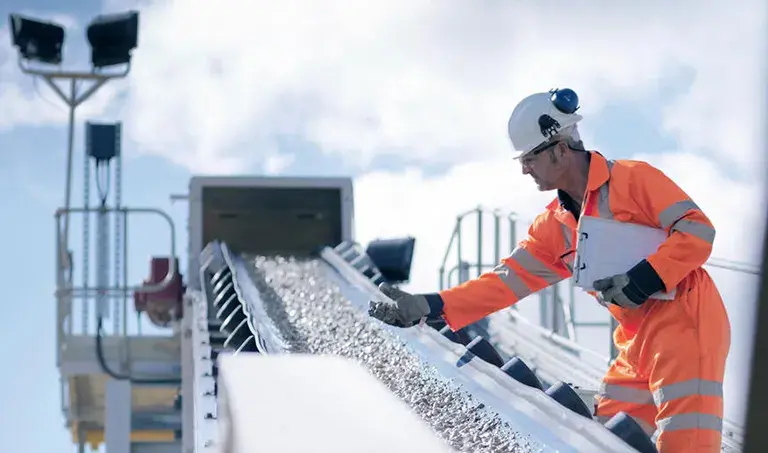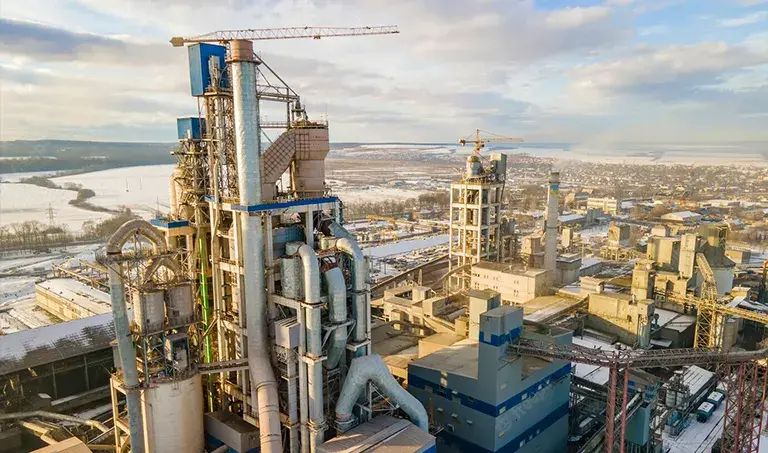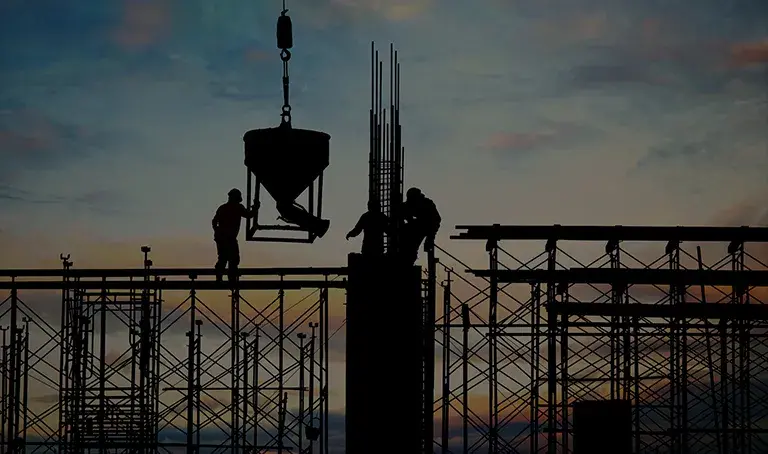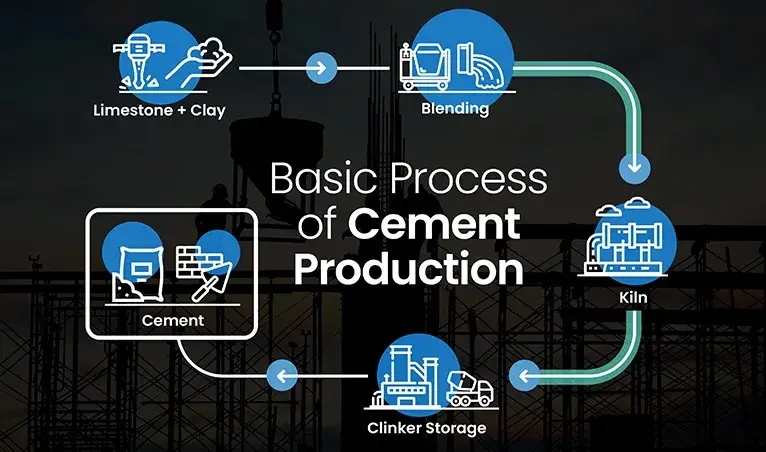Predictive Maintenance in Cement Industry: Driving Plant Reliability Through Focused Applications
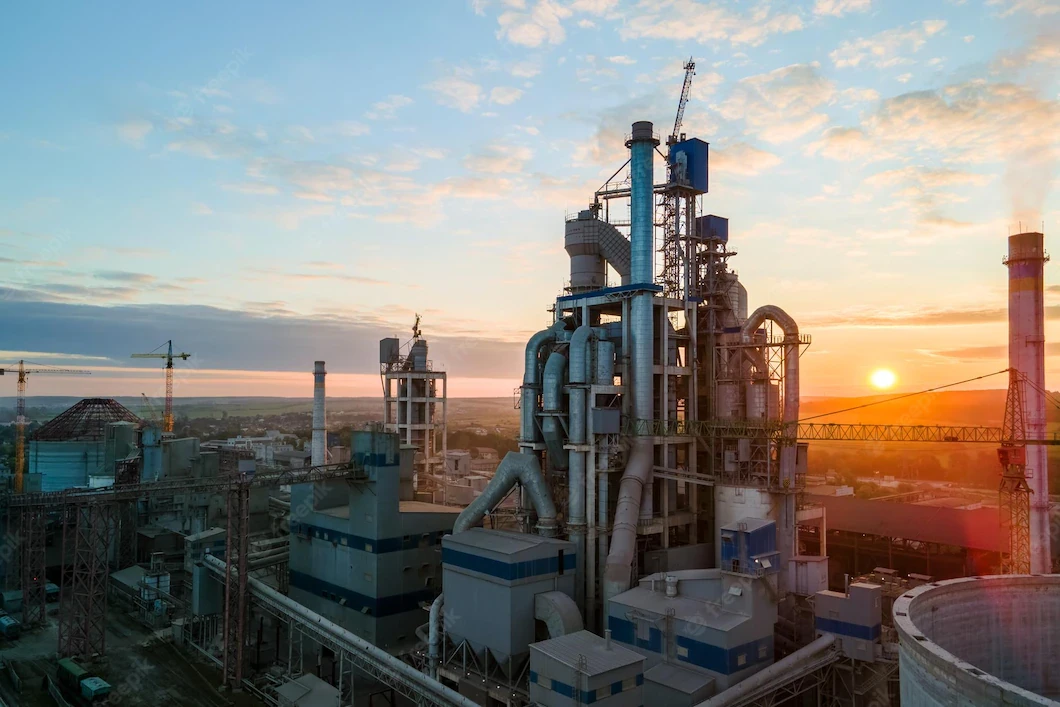
Plant reliability is evolving into an important focus area for production and operation heads in both discrete and process manufacturing industries. With global market dynamics shifting and supply chain-wide efficiencies becoming crucial for maintaining competitive advantage; manufacturers are investing in initiatives and strategies that can make their production environments more productive and reliable. Naturally, the market for predictive maintenance, potentially the biggest enabler of reliability objectives, is growing exponentially.
By the end of 2022, global investments in predictive maintenance are estimated to reach USD 5.86 Bn and continue to grow at a rate of 30.67% CAGR. While North America is presently the biggest market for predictive maintenance and reliability solutions, the Middle East and Asia Pacific are the fastest-growing markets, poised to be the growth hubs of tomorrow. Amidst such promising developments, the cement industry remains a front-runner and prominent adopter of predictive maintenance solutions.
Predictive Maintenance in Cement Plants
Predictive maintenance (PdM) is a maintenance approach that entails the use of cloud-enabled technologies to monitor diverse assets involved in production and estimate maintenance needs on the basis of asset conditions and detected anomalies. Industrial assets are monitored in real-time using advanced condition-based monitoring (CBM) techniques. Edge diagnostics and vibration analysis are subsequently deployed to determine the state of assets and determine the presence of impending mechanical faults such as:
1. Structural and rotational looseness
2. Stiffness and unbalance
3. Heightened friction due to lack of lubrication
4. Misalignment and insufficient clearance
5. Coupling and gear defects
6. Bearing faults and failure
2. Stiffness and unbalance
3. Heightened friction due to lack of lubrication
4. Misalignment and insufficient clearance
5. Coupling and gear defects
6. Bearing faults and failure
With the timely diagnosis of equipment faults, predictive analytics also perform root cause analysis to provide insights about underlying causes and guide decision-making about maintenance planning. OEM inspections can be more targeted and the time to source and replace machine components can be reduced with access to the right information. In the cement industry, where even an hour of unplanned downtime due to equipment failure can translate into as much as $100,000 of losses in revenue, focused application of PdM could mean savings of millions of dollars.
However, plant maintenance and digitalization teams responsible for automating maintenance processes must assess mission-critical equipment and applications before adopting the predictive maintenance approach. Here are some of the most significant applications in cement production that can be monitored in real-time with PdM solutions and made more reliable.
Critical Applications of PdM in the Cement Industry
Raw Mill
Raw mill is an essential part of the raw material handling and grinding process in a cement manufacturing plant. It grinds the raw material into a ‘raw mix’, which is then fed into the kiln for making clinker. Typically, the machine consists of a dry chamber outfitted with two grinding units to completely grind the raw material fed into the raw mill hoppers.
Raw mill is an essential part of the raw material handling and grinding process in a cement manufacturing plant. It grinds the raw material into a ‘raw mix’, which is then fed into the kiln for making clinker. Typically, the machine consists of a dry chamber outfitted with two grinding units to completely grind the raw material fed into the raw mill hoppers.

The raw mill also has large bag house fans and seal air fans to support the separation of grit and the Dynamic Air Separator (DAS) function. These fans can often suffer from mechanical issues like bearing faults and unbalance in the fan impeller due to dust coating. If left undiagnosed, unbalancing can lead to up to 4 hours of downtime in the raw mill, whereas bearing defects can surmount even higher downtimes if replacement bearings are not available.
With predictive maintenance, these faults can be pre-emptively detected and resolved, ensuring maximum availability of a raw mill. 56 monitoring locations can be digitized to track the mill condition in real time. As the subsequent cement production process depends on the output of the raw mill, continual condition monitoring of the equipment also ensures that the downstream process continues uninterrupted.
Coal Mill
The next critical application in cement production is a coal mill, also known as a coal pulverizer or coal grinder. A coal mill is used for grinding coal into coal powder and supplying it to the kiln and calciner units. The most common types of coal mills in cement manufacturing are vertical roller mills and air-swept ball mills. Since kilns utilize large amounts of coal powder as fuel to support cement production, coal mills have to run continuously and reliably.
The next critical application in cement production is a coal mill, also known as a coal pulverizer or coal grinder. A coal mill is used for grinding coal into coal powder and supplying it to the kiln and calciner units. The most common types of coal mills in cement manufacturing are vertical roller mills and air-swept ball mills. Since kilns utilize large amounts of coal powder as fuel to support cement production, coal mills have to run continuously and reliably.
However, components such as rotary feeder, classifier, and seal air fans are prone to wear-tear and mechanical faults which could disrupt the coal mill’s functioning. Bearing and gearbox defects in the mill can result in as much as 56 hours of unplanned production downtime. With real-time condition monitoring on 32 bearing locations and vibration analysis to diagnose equipment faults, strong maintenance contingency plans can be installed in place to avoid such costly process failures.
Kiln
Shaft and rotary kilns are the most commonly used type of kiln applications in the cement industry. Kilns are responsible for creating very high temperatures (1500 ⁰C) in an insulated environment to facilitate chemical and physical reactions between raw material components. As a complex machine group, it has critical machines working in continuum such as PH (pre-heater) fans, kiln feeder elevators, calciners, and cooling fans.
Shaft and rotary kilns are the most commonly used type of kiln applications in the cement industry. Kilns are responsible for creating very high temperatures (1500 ⁰C) in an insulated environment to facilitate chemical and physical reactions between raw material components. As a complex machine group, it has critical machines working in continuum such as PH (pre-heater) fans, kiln feeder elevators, calciners, and cooling fans.

Drive misalignment in the kiln feeder bucket elevators can result in 12 hours of production downtime, whereas faults like gear mesh and incorrect clearance can cause up to 16 hours of downtime. Similarly, calciner string fans can repeatedly break down due to product build-up on impellers and lead to over 10 hours of downtime. Unbalance and misalignment in PH fans due to self-coating can also halt production for up to 8 hours.
Through a predictive maintenance approach, over 102 monitoring locations can be digitized within the kiln section to provide real-time machine health information to the maintenance teams. Faults can be detected in advance with data-backed insights about corrective actions to facilitate maintenance events.
Cement Mill
The nodular clinker generated in the kiln is then transferred to the cement mill, wherein with the help of vertical roller mills, roller press, and ball mill, it is converted into the powder form of cement. Bearing and coupling faults in the gearbox of a cement mill can halt the cement plant production for up to 3 days. At the same time, structural looseness and misalignment in mill components can lead to nearly 30 hours of production downtime.
The nodular clinker generated in the kiln is then transferred to the cement mill, wherein with the help of vertical roller mills, roller press, and ball mill, it is converted into the powder form of cement. Bearing and coupling faults in the gearbox of a cement mill can halt the cement plant production for up to 3 days. At the same time, structural looseness and misalignment in mill components can lead to nearly 30 hours of production downtime.
To avoid such costly process disruption, cement mill conditions can be monitored in real-time by digitizing over 44 bearing points. Advanced edge diagnostics and predictive analytics can alert maintenance teams about existing and potential machine faults and support informed OEM investigations.
Driving Plant Reliability through focused PdM applications
In addition to the aforementioned applications, cement plants also have:
● Packaging units
● Crusher area
● Classifiers
● Dust collector fans
● BPC conveyor belts
● Bucket elevators
● Packaging units
● Crusher area
● Classifiers
● Dust collector fans
● BPC conveyor belts
● Bucket elevators
All these assets operate in tandem to form a complex production environment. Optimal asset management can’t rely on offline or manual monitoring practices and preventive maintenance strategies. In fact, these could lead to safety hazards and gradual deterioration of plant assets with depletion of remaining useful life (RUL).
Plant reliability objectives can be sustainably pursued in cement plants with standardized maintenance and asset management strategies. While building the right team and maintenance mindset are important prerequisites in building more reliable plants, adopting predictive maintenance and prioritizing the right assets for digitalization are critical reliability drivers. With a data-first reliability approach that focuses on optimizing PdM applications, cement manufacturing units can be effectively digitized and readied for the future.
Infinite Uptime’s digital reliability solutions are tailored to assist maintenance teams in the cement industry to drive centralized reliability goals. IoT-enabled asset health monitoring and predictive analytics are shared with plant leaders to execute application-specific maintenance strategies. Our patented vibration analysis technology and syndicated reliability reports allow maintenance teams to maximize their plant reliability and minimize production downtime.
Get in touch with our experts or book a demo now to understand how our solutions fit your cement plant.



